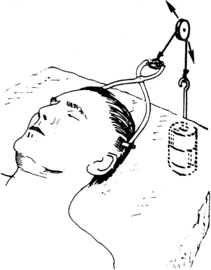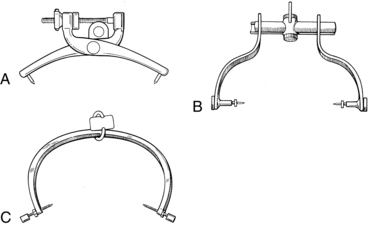PROCEDURE 97 • Knowledge of neuroanatomy and physiology is necessary. • The nurse needs to be knowledgeable about the anatomy and physiology of the spinal column, the special anatomy of the cervical vertebrae, the spinal cord, the cervical spinal nerves, and their areas of peripheral innervation. In addition, it is important that the nurse understands the pathophysiology and manifestations of spinal cord trauma, including ascending edema, spinal shock and related impairment of respiratory function, vasomotor tone, and autonomic nervous system function. • It is essential that the nurse understands the pathophysiology of spinal cord injury, including the concepts of primary versus secondary spinal cord injury and spinal shock. • The nurse needs to be knowledgeable about the signs and symptoms of new spinal cord injury or extension of injury, for example, impairment or increased impairment of motor function and sensation, respiratory function, and autonomic nervous system function resulting in loss of vasomotor tone. • The nurse should be able to state appropriate interventions that may be necessary if new or increased spinal cord injury occurs. • A number of treatment options are available to manage cervical injuries. The specific treatment for a particular patient depends on the type of injury, the level of injury (e.g., C2 as compared with C6), the specific classification of the injury, and patient characteristics. • Cervical spine traction is provided to realign, immobilize, and stabilize the cervical spine when it has become unstable as a result of a cervical spine fracture or dislocation caused by trauma or disease, degenerative processes of the cervical vertebrae, or spinal surgery (Fig. 97-1).3,4 After initial medical stabilization of the patient and assessment and documentation of neurologic function, cervical skeletal traction with the tongs or halo ring can be applied to realign the cervical spine. Tongs or a halo ring may be used with cervical traction to reduce dislocation before the patient undergoes surgery. Occasionally, an unstable cervical spinal injury may necessitate long-term cervical traction for a period of weeks to attain realignment and immobilization to stabilize the spine. The definitive method used to treat cervical fractures depends on the injury classification and physician or institution preference. • Tongs consist of a body with one pin attached at each end (Fig. 97-2). Tong pins are applied to the outer table of the skull on both sides of the skull. Cervical tongs are available in a variety of types, such as Crutchfield, Gardner-Wells, and Vinke tongs. • The shape, features, insertion site, and placement vary slightly, but the purpose, principles, and care are the same. Physician preference is an important deciding factor in choosing the specific device to be used.2,11 • The insertion of Crutchfield and Vinke tongs necessitates an incision to expose the skull. Two holes are made in the outer table of the skull with a twist drill, and the pins are inserted and tightened until there is a firm fit.2,11 • Gardner-Wells tongs are inserted by placing the razor-sharp pin edges to the prepared areas of the scalp and tightening the screws until the spring-loaded mechanism indicates that the correct pressure has been achieved. To decrease the possibility of tong displacement, all types of pins are well seated into the outer table of the skull and angled inward.2,6,11 • Tongs are made of stainless steel or a graphite body with titanium pins. The graphite body with titanium pins is compatible with magnetic resonance imaging (MRI). • Traction can be applied with the use of a rope and pulley system or a cable and alignment bracket. Weights are added gradually and followed with radiographic imaging. The physician uses serial radiographs of the cervical spine to assist in determining the optimal amount of traction (measured in pounds) needed to reduce a fracture and provide optimal alignment. Excessive traction may result in stretching of the spinal cord and subsequent damage.2–4 The addition of traction is managed by the physician.
Cervical Tongs or Halo Ring: Application for Use in Cervical Traction (Assist)
PREREQUISITE NURSING KNOWLEDGE

Full access? Get Clinical Tree


97: Cervical Tongs or Halo Ring: Application for Use in Cervical Traction (Assist)


